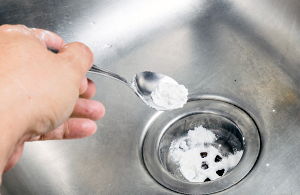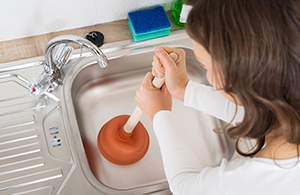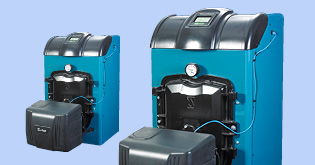- My Account:
- Sign In
- Register
- Make Payment

How to unclog a drain – A guide to unclogging sinks, showers, and more.
How to unclog your drain naturally with baking soda and vinegar.

A clogged drain is annoying and frustrating. Find out several different methods to unclog them quickly, safely and effectively.
This is an eco-friendly way to free up drains that have been clogged for just a short time.
- “Boil some water,” is a classic movie line, but it’s appropriate here. Just pour a pot of boiling water down the clogged drain.
- Put in around ½ cup of baking soda on top of the boiling water you poured in the first step. Let it sit in the drain for a few minutes.
- Next, mix 1 cup of white vinegar and a cup of super-hot water, then pour down the troublesome drain.
- Cover the drain to keep the explosive reaction in the drain.
- Let the mixture (baking soda, vinegar, and very hot water) sit for around 10-15 minutes.
- Then, flush with a pot of boiling water again.
How to unclog a drain with a drain claw or snake.
Often, a drain stick or snake will, unclog a drain without pouring baking soda and vinegar or chemicals down your drains. If you do not have a drain claw, you can make one using a wire hanger from your closet. Just straighten out the hanger and you’ll have a drain claw or stick.
- Insert the claw or snake into the drain opening until you feel some resistance. Don’t worry if the drain takes a dramatic turn just below the outside drain surface opening, the claw or snake will follow the drain pipe. When you feel resistance, you’ve reached the blockage.
- Once you reach the blockage, rotate the claw or snake against the clog until it feeds deeper into the pipe. When it moves freely, pull it out and you may find the clog attached, available to be dislodged and discarded.
- After you’ve pushed the clog, follow with hot running water at maximum force to ensure the drain is unclogged.

How to use a toilet plunger to unclog a drain.
Many people do not think of using a toilet plunger to unclog a drain. But, they can work well if you follow these instructions closely.
- The goal of the plunger is to suck out the blockage, not force it further down the drain.
- Fill the tub with a few inches of water. Just enough to submerge the “business end” of the plumber with water, since the water is the way the plunger gets it suction power.
- Place the bowl of the plunger over the bathtub drain and move the plunger up and down vigorously around 10 times.
- Add more force to your plunges if nothing is being sucked out of the tub drain.
- Continue plunging until the water drains freely if you take away the plunger.
- If nothing still comes out, move on to other methods.
How to unclog a drain using chemicals.
- Purchase a chemical drain cleaner from a retail store. Buy one that’s safe for all drains or made for your pipes (typically, PVC or copper pipes). If you’re confused about which one to purchase, get a store employee to help you.
- Read the directions carefully. The manufacturer will clearly state how much to use and how to use the liquid or crystals.
- Follow the manufacturer’s guidelines regarding safety.
- Wait the specified time and flush the drain as directed by the instructions.
If these methods don’t work, call a plumber.
If you don’t have luck with any of the above suggestions, contact one of our licensed, insured plumbers at Petro Home Services for help.
Petro Home Services is proud to not only serve communities in DC, CT, MA, MD, NJ, NY, PA, and RI but we also proudly acknowledge the skills and experience of our expert team behind all resources. With insights on topics ranging from heating oil facts to common air conditioning questions, you can rely on Petro Home Services for facts and information to help you understand more about your heating, cooling and home comfort needs. This article and all articles on the Petro Home Services website have been approved by our team of home service experts.






